Conservation Science
Protecting Pennsylvania’s Plants and Animals
Spring Wildflowers
One of the most encouraging signs of spring after a long winter is the appearance of the first wildflowers, which seem to bloom overnight! Although they appear fragile, they can survive frost and are the first to push through the snow and show their faces to the sun. There’s a strategy to this timing, especially true for spring ephemerals, which take advantage of the sunlight available to them before they’re cast into shade from trees, or out-competed by other plants. For information about other Pennsylvania plants, visit the Pennsylvania Natural Heritage plant factsheets.
Here are a few early-spring and late-spring wildflowers to look for during your next outdoor adventure in Western Pennsylvania in March, April and May. Some of the best WPC-owned preserves to find a multitude of spring species are Wolf Creek Narrows Natural Area, Toms Run Nature Reserve and Bear Run Nature Reserve.
Please note that harvesting plants is not permitted on WPC preserves. Please feel free to observe and photograph from the trail, but leave plants and flowers for other people, wildlife and pollinators to enjoy.
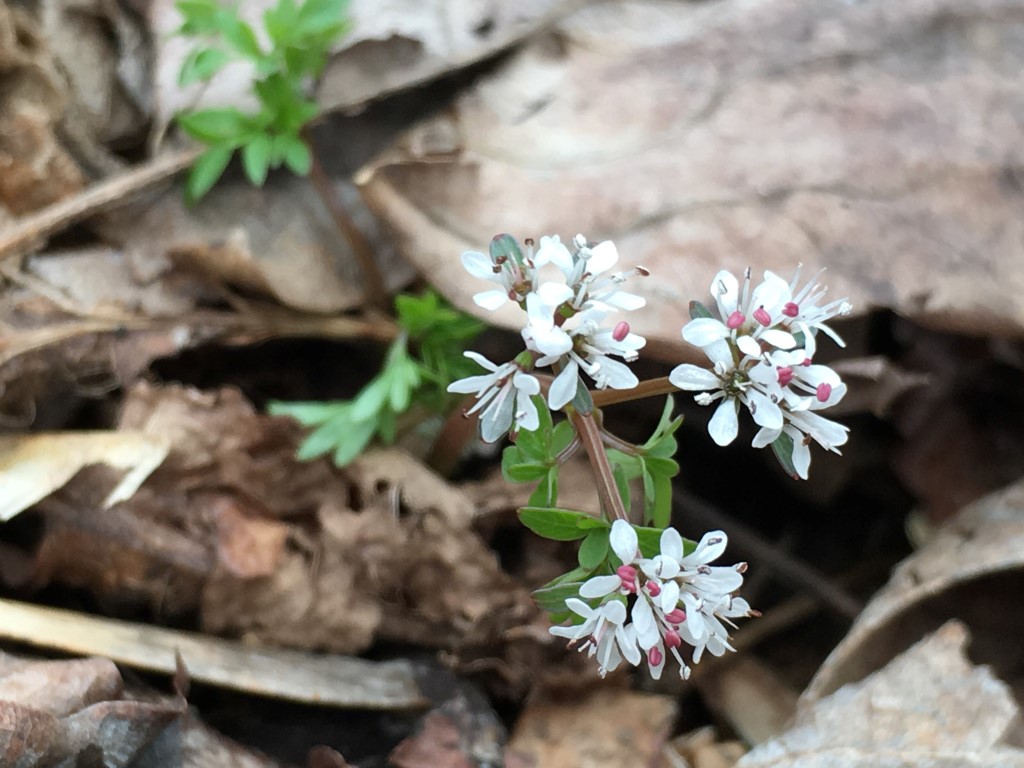
Harbinger of spring (Erigenia bulbosa)
One of the earliest to flower, this plant is a member of the carrot family. It’s less rare in Western Pennsylvania than the other side of the state, but all populations of this species are a conservation concern when we consider their genetic diversity. Its habitat is rich, mixed hardwood forests in lowlands, coastal plains and mountain valleys.
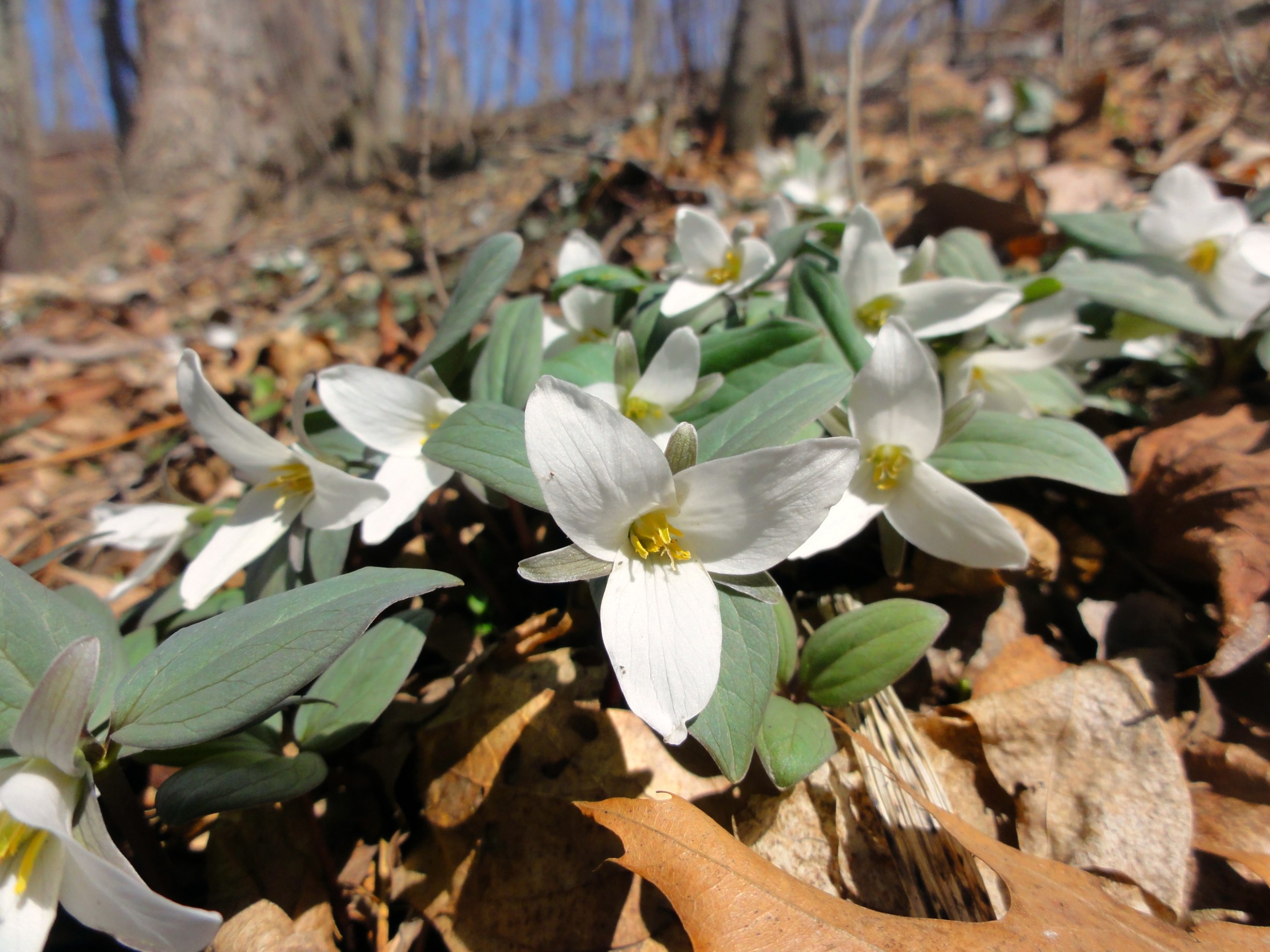
Snow Trillium (Trillium nivale)
This woodland plant is only found in the western part of the state, and is tracked by the Pennsylvania Natural Heritage Program. It’s a small member of the lily family, growing only up to 15 cm tall. The seeds bear fatty elaiosomes, which are fleshy structures that are attached to the seeds which attract ants to carry seeds away from the parent plant. Individual plants may live more than eight years. Read more about trillium here, including the best WPC preserves to find the flower blooming.
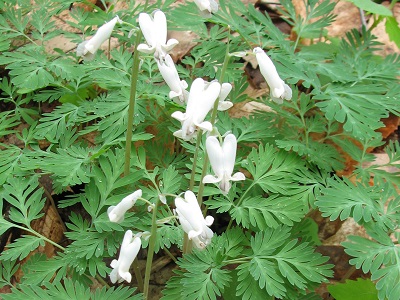
Squirrel-corn (Dicentra canadensis)
Squirrel-corn is a true spring ephemeral, beginning to bloom in mid April and going to fruit by mid May. By the time the fruit ripens, the leaves are yellow and lying on the ground. The plants spend the rest of the year as yellow, globose and smooth corms. Because they often grow on steep slopes, these corms can become exposed through natural erosion. Squirrel-corn gets its common name from the yellow corms. The flowers are similar to those of Dutchman’s breeches, but the lobes are shorter and not spreading. If the flowers and leaves remind you of a white version of bleeding heart, there is a good reason. The bleeding heart commonly grown in gardens, Dicentra formosa, is in the same genus and is native to western North America. Many cultivars have been developed, some of which have deep red “heart-shaped” flowers.
See squirrel-corn at a number of sites. Around the Pittsburgh area, these include Trillium Trail, Barking Slopes, Frick Park, Boyce Mayview Park, Dead Man’s Hollow, Round Hill Park and Raccoon Creek Wildflower Reserve. Further away you can see them at Enlow Fork, Ryerson Station State Park, Linn Run State Park, Friendship Hill National Historic Area and in the eastern part of the state at Gifford Pinchot State Park and Delaware Watergap National Recreation Area.
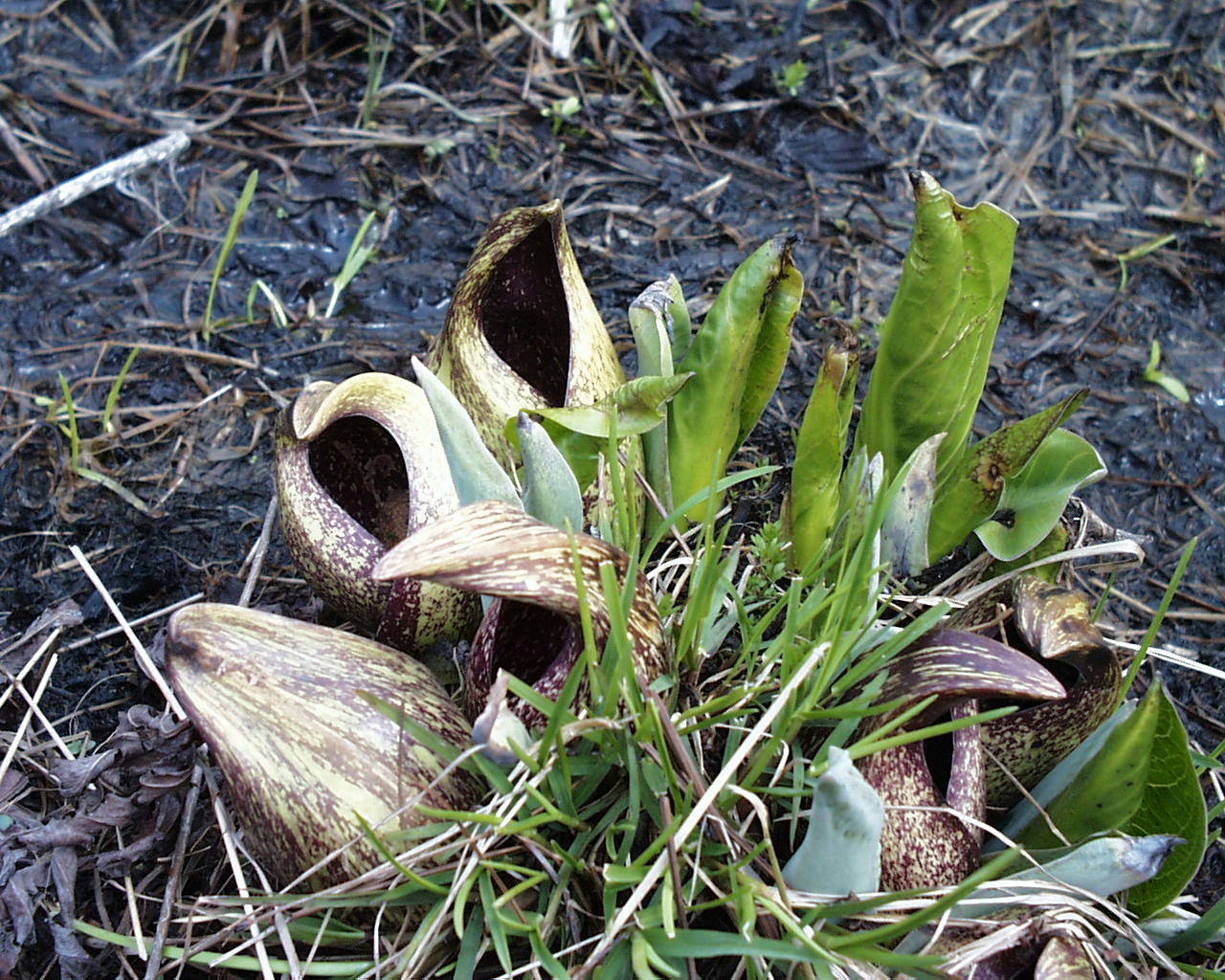
Skunk cabbage (Symplocarpus foetidus)
Fairly common in wet areas, this plant grows from 1 -3 feet tall in large patches. These plants are thermogenic, meaning that they actually produce heat as they emerge, melting snow and ice around them. The large flower resembles decaying flesh and disperse a fetid scent to attract fly pollinators. The quilted patterned leaves emerge as the flower dies.
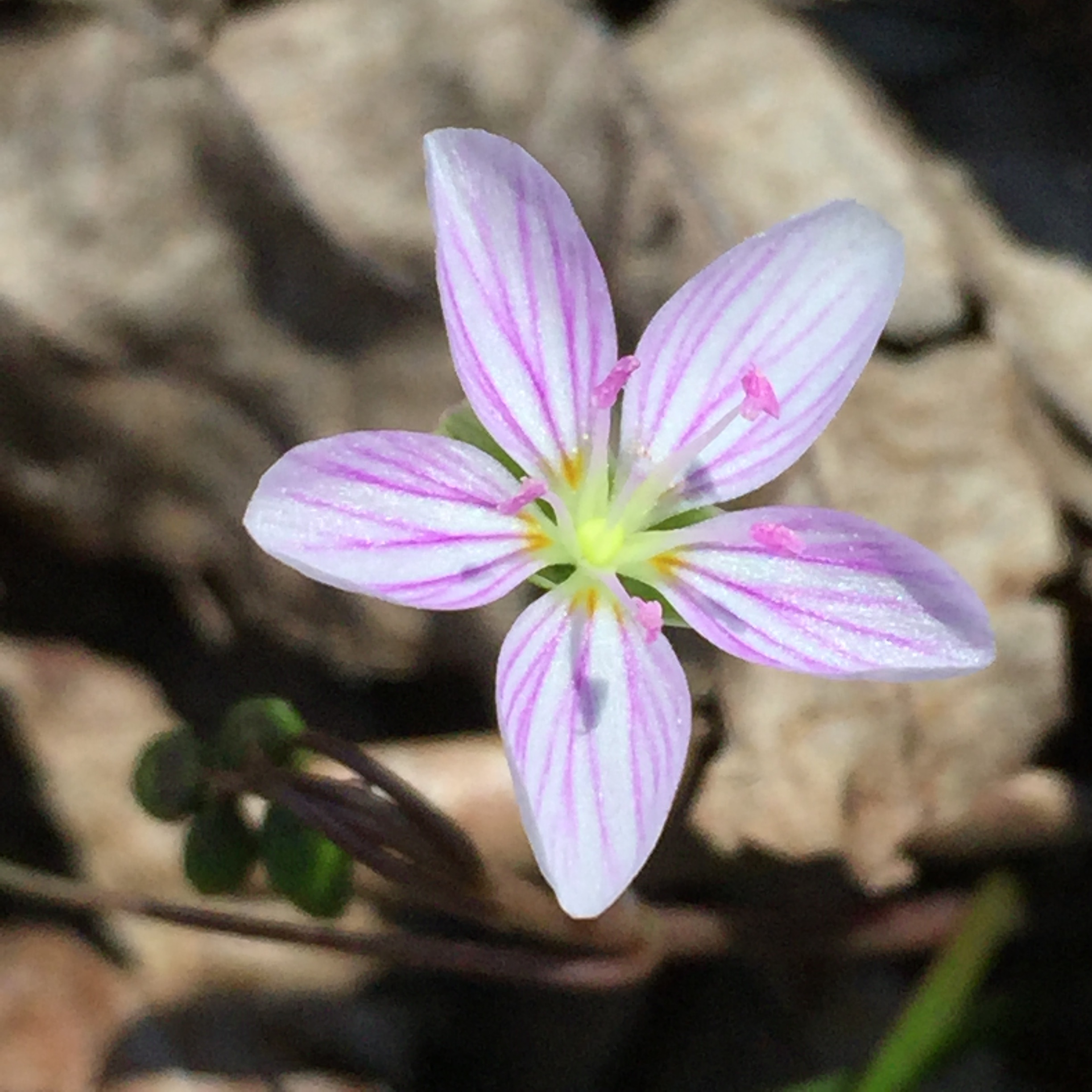
Spring beauty (Claytonia virginica)
This delicate whitish-pink flower with pink stripes and grass-like leaves grows in low clusters. They prefer partial shade and moist, rich soil. The edible tubers taste like chestnut (but please just let them grow!).
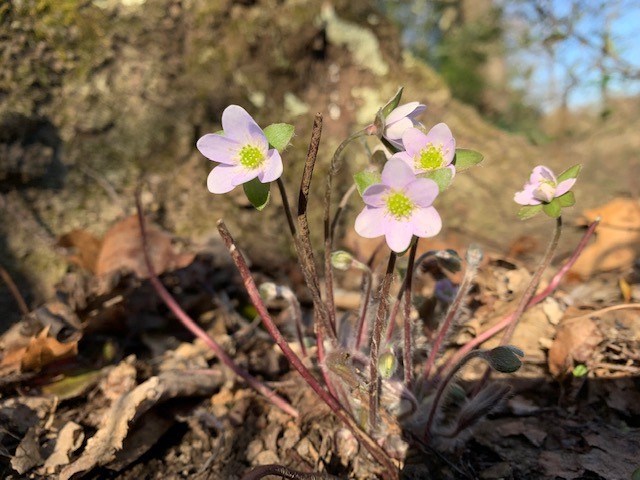
Round-lobed hepatica (Hepatica americana)
This tiny plant can have blue, white, or pink flowers that close at night and on rainy days. The three-lobed leaves grow on hairy stems after the flower has blossomed, and remain evergreen throughout the seasons. This plant is found most often in partial to shady woodlands with rich soil. Hepatica comes from a Greek word that meant “liver” as its leaf was once thought to resemble a human liver (it doesn’t).
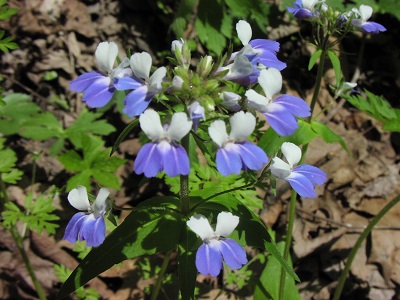
Blue-Eyed Mary (Collinsia verna)
One of the most impressive scenes of spring in western Pennsylvania is a slope or a floodplain turned light blue by a large population of blue-eyed Mary. This annual plant was the favorite of botanical explorer Thomas Nuttall, who described it in his field notes as “very elegant, with irregular flowers, the upper lip pure white, the lower is of a bright azure blue which no color can excel,” and later introduced it to science, naming it after Philadelphia botanist Zachery Collins.
Although it is known as far north as Butler County, you need to travel further southwest to see this beauty in its glory. Ryerson Station State Park, Enlow Fork Natural Area and Raccoon Creek State Park are the best public lands for seeing this plant. You can also find it by driving the back roads of western Greene County and southwestern Washington County, where it sometimes grows along the road, but is best appreciated where it carpets hillsides and floodplains back from the road. A nice place to see it from the car is approaching Enlow Fork from the south on Meyers Lane off Day Road.
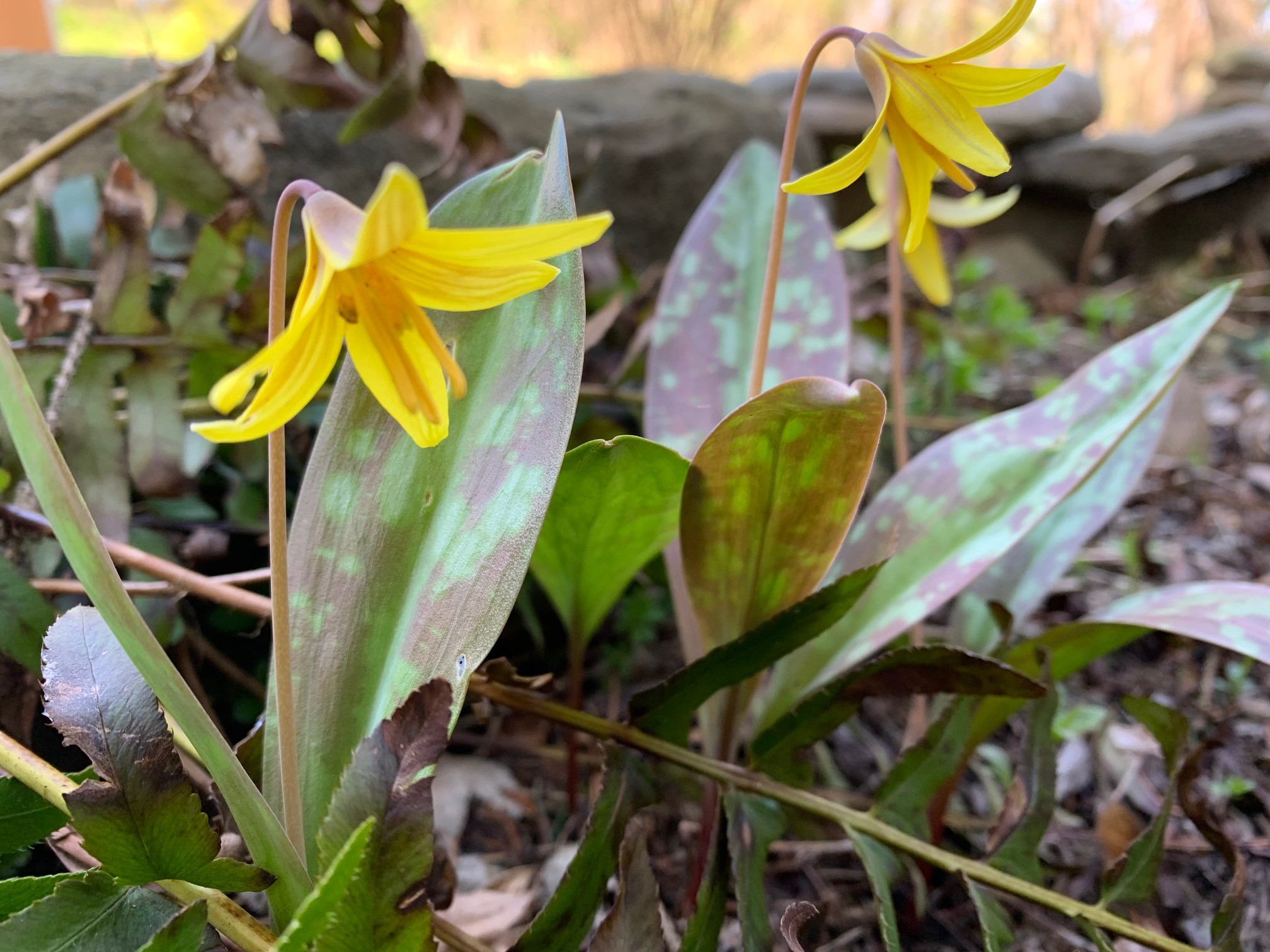
Yellow trout lily (Erythronium americanum)
This bright yellow, nodding flower grows in large colonies covering the forest floor. The leaf markings have a mottled appearance similar to a brown or brook trout, and they also bloom during trout fishing season. Not all of the plants will produce a flower. The plants reproduce with both runners and seeds, and like the trillium, ants help to propagate the seeds. It can take the plant up to five years to start producing a flower.
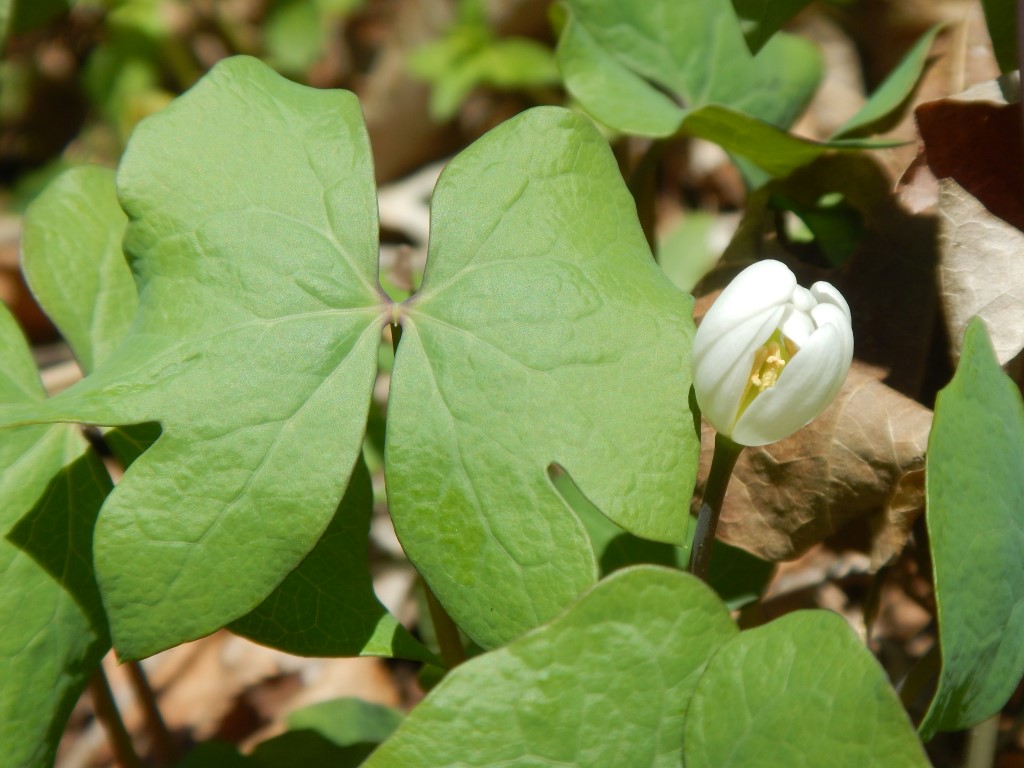
Twinleaf (Jeffersonia diphylla)
This spring rarity prefers damp, limestone soil in part shade. It is named for its leaf which splits into mirrored lobes at the top of the stem. The flower is fragile and will drop its petals in wind or rain. The leafless flower stalk produces an 8-petaled white blossom that looks similar to Bloodroot. It is about eight inches in height when it flowers in early spring, but eventually reaches 18 inches tall by maturity.
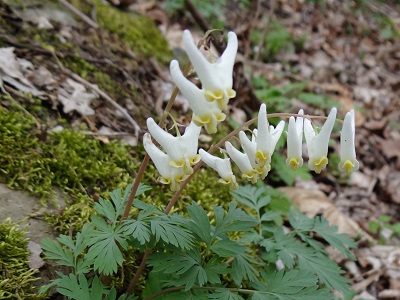
Dutchman’s Breeches (Dicentra cucullaria)
Another spring ephemeral, Dutchman’s breeches blooms in April a few days to a week after squirrel-corn and goes to fruit by mid May. It bears several similarities to squirrel-corn including that after it blooms, Dutchman’s breeches become pink and scaly corms for the remainer of the year. You can see how Dutchman’s breeches got its English name from the shape of the flower. Why are the breeches up-side down? Perhaps they are hanging out to dry after laundering!
You can view both Dutchman’s breeches in the Pittsburgh area at Trillium Trail, Barking Slopes, Frick Park, Boyce Mayview Park, Dead Man’s Hollow, Round Hill Park and Raccoon Creek Wildflower Reserve. Also see them at Enlow Fork, Ryerson Station State Park, Linn Run State Park and Friendship Hill National Historic Area. Further east, you will find them at Gifford Pinchot State Park and Delaware Watergap National Recreation Area.
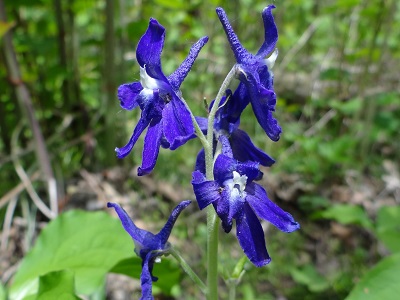
Dwarf larkspur (Delphinium tricorne)
Like blue-eyed Mary, dwarf larkspur is found only in southwest Pennsylvania. The flowers are deep purple at their peak. As they fade to pink and finally white, the flowers keep their shape pretty well, producing a multi-colored display. The flower’s structure is interesting to the eye, and the presence of a spur indicates some pollinator specialization.
Thanks to the work of Lazarus Macior (published in volume 62 of the American Journal of Botany), a lot is known about dwarf larkspur and its pollination. Although a variety of bee, moth and butterfly species feed on the nectar and pollen, only a few species of bumblebee land the right way on the flower, and have sufficient body weight to open the flowers enough to expose all the reproductive organs and effect pollination. Larkspurs are not the only plants that are dependent on bumblebees for pollination. Unfortunately, bumblebees are decreasing world-wide for reasons only partly understood. This is a classic illustration of the need to maintain complex interactions between species if we are to minimize the loss of species overall.
Dwarf larkspur grows on lower valley slopes in rich moist (but not wet) forests, which are typically found on somewhat north-facing slopes. You will likely also find an abundance of other spring wildflowers nearby. Look for it at our Bear Run Nature Reserve in Fayette County. In Allegheny County, you can see it at Barking Slopes, Boyce Mayview Park and Round Hill Park. Elsewhere in southwest Pennsylvania, find it at Ryerson Station State Park, Enlow Fork Natural Area, Raccoon Creek Wildflower Reserve, Cedar Creek Park, Dead Man’s Hollow and Friendship Hill National Historic Site.
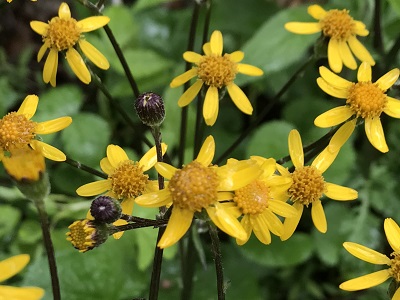
Golden-ragwort (Packera aurea)
Its buds are purple, so it is not until bloom time that the name of this wildflower is appreciated: golden-ragwort (Packera aurea). A member of the sunflower family, it is commonly found where soils are wet and shade is not deep.
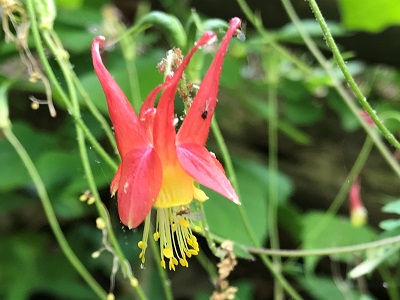
Wild Columbine (A. canadensis)
The blue European columbine (Aquilegia vulgaris) is often grown in gardens, but pictured here is our native wild columbine (A. canadensis), photographed at WPC's Lutzville Cliff Natural Area in Bedford County. Wild columbine typically grows on limestone rock or in some other calcium-bearing open habitat. This is one of the wildflowers visited by the ruby-throated hummingbird.
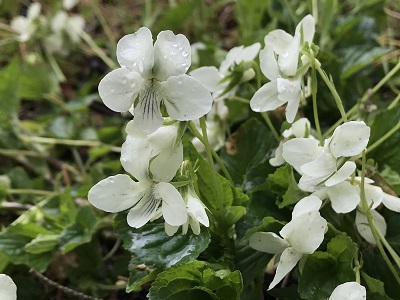
Cream Violet (Viola striata)
"Roses are red and violets are blue"...but not entirely. There are about two dozen species of violets in Pennsylvania and although some are blue, others are shades of yellow, lavender, purple and even white, like this cream violet (Viola striata). It is a common species and you can see them, for example, on WPC preserves in the Loyalhanna Creek Gorge area of Westmoreland County.
For More Information:
Western Pennsylvania Conservancy
Natural Heritage Program
800 Waterfront Drive
Pittsburgh, PA 15222
412-586-2392
Pennsylvania Natural Heritage Program
Rachel Carson State Office Building
5th Floor
400 Market Street
Harrisburg, PA 17105
